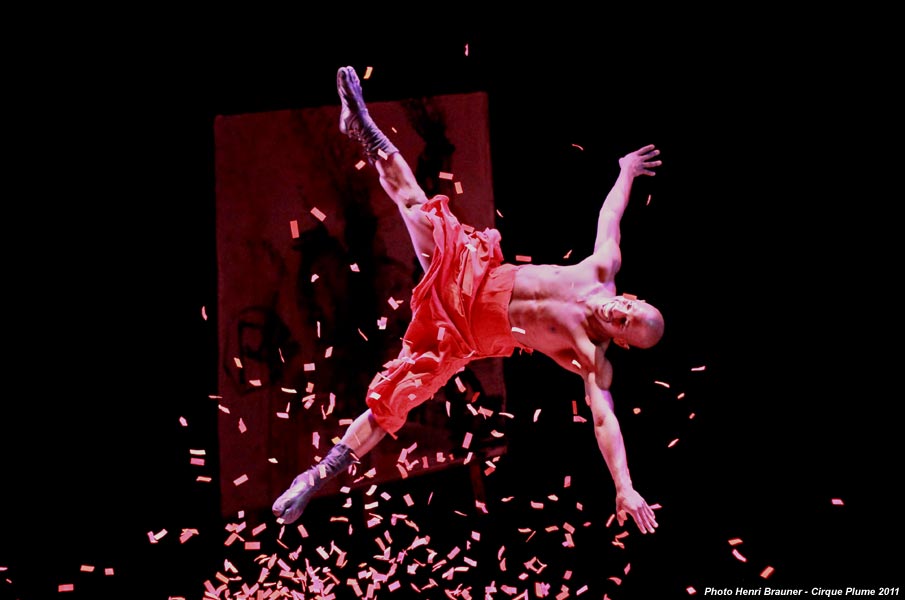France – the birthplace of contemporary circus
This is the story of contemporary circus, or nouveau cirque, how and when it had begun. As a result of hard work, determination and circumstances, a new artistic discipline was born in France under the name “Nouveau cirque”, or contemporary circus.
Contemporary circus is the result of creative experiments. Its founders are the artists and troupes, such as “Cirque Nu”, “Cirque Bonjour”, “Le Puits aux Images” (that later became “Cirque Baroque”), “Cirque Aligre”, “Cirque Plume”, “Archaos”. In the late 1970’s, inspired by contemporary dance and theatre, they began experimenting with the circus.
The old circus had no place in the new world
Until the 1970’s, circus in France existed for 200 years almost unchanged. What had changed, was the audience. 20th century society had experienced two world wars and the development of technology that offered new ways of entertainment, like cinema and television. It was no longer the same world, where the circus had arisen.
In the seventies, circus in France underwent major crisis. Beside various other available forms of entertainment, circus had nothing new to offer to the public, which at the time gradually began to lose all interest. Tastes had changed and in the eyes of the audience circus was aesthetically and morally obsolete. Traditional circus was also no longer suitable for current economic conditions. During this time, several traditional circuses went out of business, also so well known ones as “Amar Circus” (restored in 1991). Circus had to change in order to survive.
Survival through change
In this difficult moment circus industry was given a helping hand by the French government. Initially the objective was not to create something new, but just the opposite – to rescue the centuries long tradition from extinction. In 1978, responsibility for circus trade went from Ministry of Agriculture to the Ministry of Culture. This way circus finally was accepted as the form of culture and most importantly circus artists acquired same kind of rights as artists in other fields, becoming eligible for the status of “intermittant de spectacle”. This status allowed an artist receive financial grants for preparation of the show, before it creates any revenue. This reform was paramount to the advancement of the circus as a form of art, as it gave a chance to the artist to work on the shows development and direction, instead of repeating same old performances in order to earn a living.
At this time the first circus festivals were organised and the first awards for innovation in the circus arts were introduced. In particular, we should mention festivals, such as “Festival International du Cirque de Monte-Carlo” (International Circus Festival de Monte-Carlo) (1974), “Festival Mondial du Cirque de Demain” (The World Festival of the Circus of Tomorrow) (1978) and Lui M’s grants for up-and-coming circus artists (1977). One of most important aspects in development of contemporary circus was opening of the specialised circus schools. In 1974 in France was opened first school for circus artists in western Europe – AlexGruss & SilvaMonfortCircusSchool and AnnieFratellini & PierreEtaixNationalCircusSchool. Although initially there was no intention to fundamentally change the circus tradition, this change had made possible studies of the circus arts for anybody interested, whereas in the past it was reserved only for the circus dynasties. In France since have been established numerous state universities and national circus arts centres aiding the development of the trade.
Very important work is being done by keeping the general public informed. In France, there always were few specialised periodicals for circus arts. Today, most of this work is done by the various national circus arts centres and a publishing house “Hors Les Murs”.
The era was not a coincidence
Of course, one can not forget the cultural factors. Hippy culture brought along interest in Eastern cultures, glorifying the vagabond lifestyle and street artists, and also more importantly animal rights movement. The upkeep and transport of circus animals has always been expensive and complex. Most contemporary circus artists choose not to use animals in their performances, due to these moral and economic considerations.
Currently contemporary circus, or “nouveau cirque”, continues its development. The last available data shows that there are 450 individuals practising this form of art, and 942 different shows offered by circus companies.
Useful addresses:
National Centre for Circus Arts, CNAC
Toulouse Municipal Centre for Circus Arts
CircusSchool Federation, France
Publishing House “Hors les Murs” and material resources dedicated to street art and circus
Trade Union for Circus Artists, France
NationalCircusSchool of Châtelleraut
National Circus School of Rosni-sir-bua
Fratellini Circus Academy
P.S.
For a curious mind, here is the history of the contemporary circus in the UK, in the aesthetically pleasing form: http://www.cryingoutloud.org/home/timeline/
General history of the circus in chronological order:
http://www.circusarts.org.uk/i-want-to/research/history-links.php
Text by Māra Pāvula
Photo from show “L’atelier du peintre” by Cirque Plume – Henri Brauner © Cirque Plume 2011




 Follow
Follow